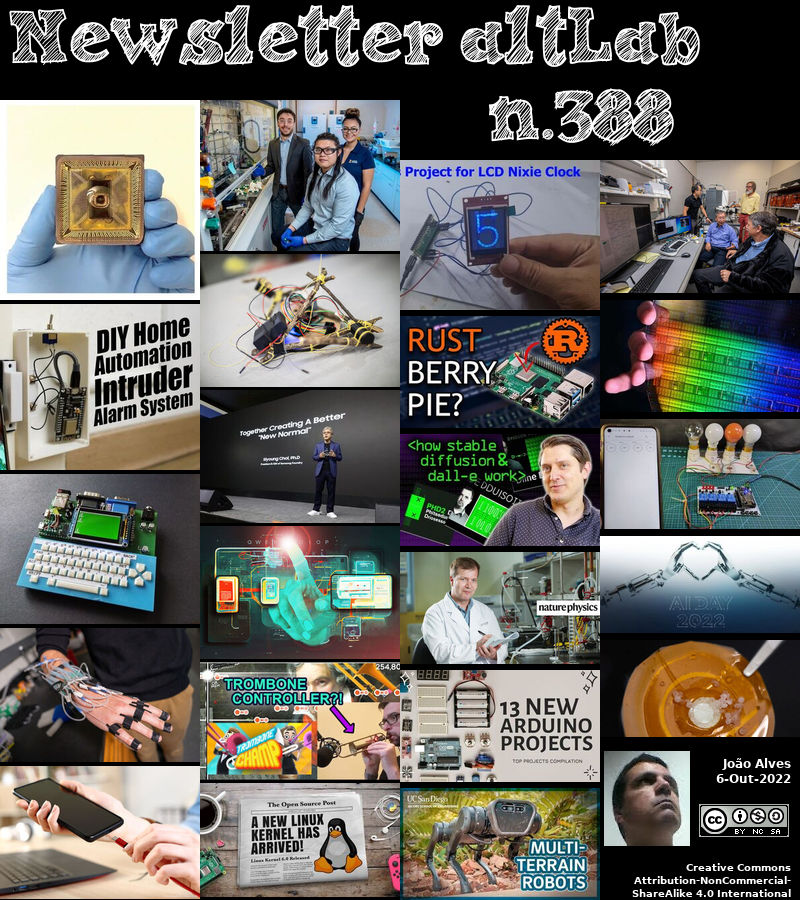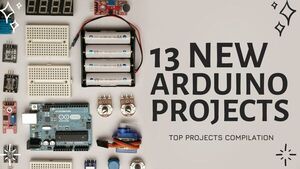2022-10-06 - Nº 388
Editorial
Esta é a Newsletter Nº 388 que se apresenta com o mesmo formato que as anteriores. Se gostar da Newsletter partilhe-a!
Todas as Newsletters encontram-se indexadas no link.
Esta Newsletter tem os seguintes tópicos:
Faz hoje anos que nascia, em 1735, o pioneiro britânico Jesse Ramsden. Ele concebeu diversas de ferramentas de precisão. Aos 23 anos, Ramsden optou por aprender a fazer instrumentos matemáticos. Aos 27 anos de idade tinha o seu próprio negócio em Londres e era conhecido como o desenhador mais hábil de instrumentos matemáticos, astronómicos, de topografia e de navegação do século XVIII. É mais conhecido pelo design de um telescópio e de um microscópio (ocular) ainda hoje comummente utilizado e com o seu nome. O cientista francês N. Cassegrain propôs o desenho de um telescópio reflector em 1672. Foi Ramsden, contudo, 100 anos mais tarde, que descobriu que este desenho reduz o embaçamento da imagem causado pela esfericidade das lentes ou espelhos. Também construiu tornos, barómetros, manómetros e balanços de ensaio.
Faz também hoje anos que nascia, em 1831, o matemático alemão Richard Dedekind. Ele desenvolveu uma grande redefinição de números irracionais em termos de conceitos aritméticos. Embora não tenha sido plenamente reconhecido na sua vida, o seu tratamento das ideias do infinito e do que constitui um número real continua a influenciar a matemática moderna.
Faz igualmente hoje anos que nascia, em 1846, o engenheiro, inventor e industrial americano George Westinghouse. Ele fundou a sua própria empresa para fabricar a sua invenção, o travão de ar. Filho de um fabricante de máquinas agrícolas de Nova Iorque, começou aos 21 anos de idade a trabalhar numa nova ferramenta que inventou para guiar vagões de comboio descarrilados de volta à via. Antes de morrer 46 anos mais tarde, produzia transporte ferroviário mais seguro, turbinas a vapor, iluminação e aquecimento a gás, e electricidade. Fundou não só os nomes Westinghouse Air Brake e Westinghouse Electric, mas também Union Switch & Signal e os precursores de Duquesne Light, Equitable Gas e Rockwell International. Foi também o principal responsável pela adopção de corrente alternada para transmissão de energia eléctrica nos Estados Unidos, e detinha 400 patentes.
Faz também hoje anos que nascia, em 1866, o físico, engenheiro e inventor canadiano-americano Reginald Fessenden. Ele transmitiu o primeiro programa de voz e música. Em 1893, Fessenden mudou-se para Pittsburgh como chefe de engenharia eléctrica na universidade, Fessenden leu sobre o trabalho de Marconi e começou a fazer experiências com ele próprio. Marconi só conseguia transmitir o código Morse. Mas o objectivo de Fessenden era transmitir a voz humana e a música. Ele inventou a rádio AM "onda contínua": som sobreposto pela modulação de amplitude a uma onda de rádio portadora para transmissão. Um receptor de rádio extrai o sinal da onda portadora para que o ouvinte ouça o som original. Fessenden fez as primeiras transmissões de voz de longo alcance na véspera de Natal de 1906 a partir de uma estação em Brant Rock, Massachusetts, ouviu centenas de quilómetros no Atlântico.
Por fim, faz hoje anos que nascia, em 1903, o físico irlandês Ernest Walton. Ele recebeu, com Sir John Douglas Cockcroft da Inglaterra, o Prémio Nobel da Física de 1951 pelo desenvolvimento do primeiro acelerador de partículas nucleares, conhecido como o gerador Cockcroft-Walton. O acelerador foi construído numa sala em desuso no Laboratório Cavendish, e fornecido com várias centenas de quilovolts de um circuito multiplicador de voltagem concebido e construído por Cockroft e Walton. A 14 de Abril de 1932 Walton ligou o feixe de protões a um alvo de lítio. Apesar de todas as probabilidades contra eles, conseguiram ser os primeiros a dividir o átomo, e Walton foi o primeiro a ver a reacção a ter lugar. Eles identificaram os produtos de desintegração como partículas alfa (núcleos de hélio).
Nesta semana que passou na sequência da aprovação do Parlamento, os consumidores da UE poderão em breve utilizar uma única solução de carregamento para os seus dispositivos electrónicos. Até ao final de 2024, todos os telemóveis, tablets e câmaras fotográficas vendidos na UE terão de estar equipados com uma porta USB de carregamento tipo C. A partir da Primavera de 2026, a obrigação estender-se-á aos computadores portáteis. A nova lei, aprovada pelo plenário na terça-feira com 602 votos a favor, 13 contra e 8 abstenções, faz parte de um esforço mais amplo da UE para reduzir o lixo electrónico e para capacitar os consumidores a fazerem escolhas mais sustentáveis.
Também nesta semana que passou a versão final do Linux 6.0 inicia a série 6.x na sua forma mais fina, trazendo um conjunto de melhorias de desempenho, novo suporte de hardware, correcções de segurança, e o habitual saco de agarramento de ajustes no sistema de ficheiros. Anunciando o lançamento na Linux Kernel Mailing List, Linus Torvalds disse: "Como se espera que seja claro para todos, a grande alteração do número de versões é mais sobre eu ficar sem dedos dos pés e das mãos do que sobre quaisquer grandes mudanças fundamentais". De entre as novidades temos suporte de Kernel para autenticação NVMe in-band, Subsistema de verificação em runtime, Driver kernel do Raspberry Pi 4 V3D, IO_uring em user-space, escritas bufferizadas em filesystem XFS, suporte para o protocolo Send v2 do filesystem Btrfs, H.265/HEVC API promovida a estável.
Por fim, esta semana que passou o CEO da Tesla, Elon Musk, revelou um protótipo de um robô humanóide "Optimus" que partilha algum software e sensores de IA com as características de assistência ao condutor dos seus automóveis Autopilot. No início da apresentação do Dia da IA de Tesla 2022, Musk reconheceu que tinha "um tipo de fato" no ano passado, mas prometeu algo muito mais impressionante hoje. Segundo Musk, este protótipo pode fazer mais do que aquilo que foi mostrado ao vivo, mas "a primeira vez que funcionou sem uma corda foi esta noite no palco". Musk previu que poderia atingir um preço "provavelmente inferior a 20.000 dólares" e mais tarde, numa sessão de perguntas e respostas, explicou que Tesla é muito bom na construção da IA e dos actuadores necessários para a robótica, com base na experiência de produzir unidades de accionamento para carros eléctricos. Musk disse que isso a ajudaria a colocar robôs capazes na produção e a começar por testá-los dentro das suas fábricas.
Na Newsletter desta semana apresentamos diversas noticias, artigos científicos, projetos de maker e alguns vídeos interessantes.
 João Alves ([email protected])
João Alves ([email protected])
O conteúdo da Newsletter encontra-se sob a licença  Creative Commons Attribution-NonCommercial-ShareAlike 4.0 International License.
Creative Commons Attribution-NonCommercial-ShareAlike 4.0 International License.
Novidades da Semana

Long-awaited common charger for mobile devices will be a reality in 2024
"Following Parliament’s approval, EU consumers will soon be able to use a single charging solution for their electronic devices. By the end of 2024, all mobile phones, tablets and cameras sold in the EU will have to be equipped with a USB Type-C charging port. From spring 2026, the obligation will extend to laptops. The new law, adopted by plenary on Tuesday with 602 votes in favour, 13 against and 8 abstentions, is part of a broader EU effort to reduce e-waste and to empower consumers to make more sustainable choices. Under the new rules, consumers will no longer need a different charger every time they purchase a new device, as they will be able to use one single charger for a whole range of small and medium-sized portable electronic devices. Regardless of their manufacturer, all new mobile phones, tablets, digital cameras, headphones and headsets, handheld videogame consoles and portable speakers, e-readers, keyboards, mice, portable navigation systems, earbuds and laptops that are rechargeable via a wired cable, operating with a power delivery of up to 100 Watts, will have to be equipped with a USB Type-C port." [...]

Linux Kernel 6.0 Released, This is What’s New
"Linux 6.0 kickstarts the 6.x series in fine form, bringing an assortment of performance improvements, new hardware support, security fixes, and the usual grab-bag of file-system tweaks to the fore. Announcing the release over on the Linux Kernel Mailing List, Linus Torvalds said: “As is hopefully clear to everybody, the major version number change is more about me running out of fingers and toes than it is about any big fundamental changes.” “But of course there’s a lot of various changes in 6.0 – we’ve got over 15k non-merge commits in there in total, after all, and as such 6.0 is one of the bigger releases at least in numbers of commits in a while. For a pinch more detail on what’s new in Linux kernel 6.0, read on. Benchmarking done by Phoronix reveals appreciable performance improvements across Intel Xeon ‘Ice Lake’, AMD Ryzen ‘Threadripper’, and AMD EPYC processors thanks to scheduler changes and other kernel energy tweaks. Seeing Linux squeeze more power while using less power is always a welcome one. Linux 6.0 also does some mandatory future-proofing by laying groundwork for swathes of upcoming hardware." [...]
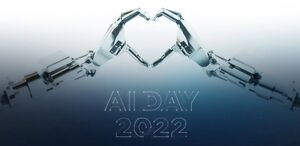
Tesla CEO Elon Musk unveils prototype humanoid Optimus robot
"Tesla CEO Elon Musk revealed a prototype of a humanoid "Optimus" robot that shares some AI software and sensors with its cars' Autopilot driver assistance features. At the start of Tesla's 2022 AI Day presentation, Musk acknowledged that they had "a guy in a suit" last year but promised something much more impressive today. According to Musk, this prototype can do more than what was shown live, but "the first time it operated without a tether was tonight on stage." Musk predicted it could hit a price of "probably less than $20,000" and later, in a Q&A session, explained that Tesla is very good at building the AI and the actuators necessary for robotics based on the experience of producing drive units for electric cars. Musk said that would help it get capable robots into production and start off by testing them within its factories. He claimed that the difference between Tesla's design and other "very impressive humanoid robot demonstrations" is that Tesla's Optimus is made for mass production in the "millions" of units and to be very capable." [...]
Outras Notícias
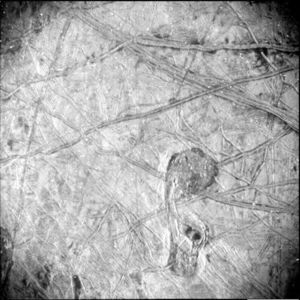
NASA’s Juno Gets Highest-Resolution Close-Up of Jupiter’s Moon Europa
"Observations from the spacecraft’s pass of the moon provided the first close-up in over two decades of this ocean world, resulting in remarkable imagery and unique science. The highest-resolution photo NASA’s Juno mission has ever taken of a specific portion of Jupiter’s moon Europa reveals a detailed view of a puzzling region of the moon’s heavily fractured icy crust. The image covers about 93 miles (150 kilometers) by 125 miles (200 kilometers) of Europa’s surface, revealing a region crisscrossed with a network of fine grooves and double ridges (pairs of long parallel lines indicating elevated features in the ice). Near the upper right of the image, as well as just to the right and below center, are dark stains possibly linked to something from below erupting onto the surface. Below center and to the right is a surface feature that recalls a musical quarter note, measuring 42 miles (67 kilometers) north-south by 23 miles (37 kilometers) east-west. The white dots in the image are signatures of penetrating high-energy particles from the severe radiation environment around the moon." [...]

Nexperia Bolsters its Range of CFP Power Diodes
"Ongoing growth in clip-bonded FlatPower (CFP) manufacturing capacity and portfolio serves increasing demand from modern automotive and industrial applications Nexperia, the expert in essential semiconductors, today announced the latest additions to its rapidly expanding portfolio of Clip-bonded FlatPower (CFP) packaged diodes for industrial and automotive applications. The latest additions include 32 planar Schottky diodes and eight hyperfast recovery rectifiers housed in the CFP15B package. They are available as standard and Q-types that meet AEC-Q101 automotive qualification standards. By bringing multiple versions of these devices to the market Nexperia underscores its commitment to expanded manufacturing capacity and accelerated transition to smaller, thermally optimized packages. Nexperia offers engineers access to one of the most extensive CFP packaged diodes portfolios on the market from one supplier. The operating range for these new planar Schottky diodes is between 30-100 V and 3-15 A." [...]

Intel Hits Key Milestone in Quantum Chip Production Research
"The Intel Labs and Components Research organizations have demonstrated the industry’s highest reported yield and uniformity to date of silicon spin qubit devices developed at Intel’s transistor research and development facility, Gordon Moore Park at Ronler Acres in Hillsboro, Oregon. This achievement represents a major milestone for scaling and working toward fabricating quantum chips on Intel’s transistor manufacturing processes. The research was conducted using Intel’s second-generation silicon spin test chip. Through testing the devices using the Intel cryoprober, a quantum dot testing device that operates at cryogenic temperatures (1.7 Kelvin or -271.45 degrees Celsius), the team isolated 12 quantum dots and four sensors. This result represents the industry’s largest silicon electron spin device with a single electron in each location across an entire 300 millimeter silicon wafer. Today’s silicon spin qubits are typically presented on one device, whereas Intel’s research demonstrates success across an entire wafer." [...]

Highly integrated ultrasound transmitter from STMicroelectronics boosts image quality and shrinks form factor of handheld scanners
"STMicroelectronics has introduced a 64-channel ultrasound transmitter with new features to enhance the image quality and convenience of high-performance portable industrial and medical instruments. Today’s ultraportable scanners are almost the size of a smartphone yet deliver image quality comparable to large and expensive high-end systems from only a few years ago. ST’s STHVUP64 transmitter, which drives the instrument’s piezoelectric transducers, is powering the next stage in this evolution by adding extra flexibility, digital beam steering, and space-saving innovations. With 64 channels, the STHVUP64 delivers a highly integrated solution aimed at the handheld, wireless scanner segment. It can drive up to 256 probe elements directly, eliminating expensive, high-voltage switches usually needed between the transmitter and probe. Designers can thus reduce the bill of materials and take advantage of space savings inside the handset." [...]
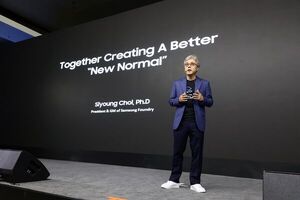
Samsung Electronics Unveils Plans for 1.4nm Process Technology and Investment for Production Capacity at Samsung Foundry Forum 2022
"Samsung Electronics, a world leader in advanced semiconductor technology, announced today a strengthened business strategy for its Foundry Business with the introduction of cutting-edge technologies at its annual Samsung Foundry Forum event. With significant market growth in high-performance computing (HPC), artificial intelligence (AI), 5/6G connectivity and automotive applications, demand for advanced semiconductors has increased dramatically, making innovation in semiconductor process technology critical to the business success of foundry customers. To that end, Samsung highlighted its commitment to bringing its most advanced process technology, 1.4-nanometer (nm), for mass production in 2027. During the event, Samsung also outlined steps its Foundry Business is taking in order to meet customers’ needs, including: △foundry process technology innovation, △process technology optimization for each specific applications, △stable production capabilities and △customized services for customers. “The technology development goal down to 1.4nm and foundry platforms specialized for each application, together with stable supply through consistent investment are all part of Samsung’s strategies to secure customers’ trust and support their success,” said Dr. Siyoung Choi, president and head of Foundry Business at Samsung Electronics. “Realizing every customer’s innovations with our partners has been at the core of our foundry service.” Showcasing Samsung’s Advanced Node Roadmap Down to 1.4nm in 2027 With the company’s success of bringing the latest 3nm process technology to mass production, Samsung will be further enhancing gate-all-around (GAA) based technology and plans to introduce the 2nm process in 2025 and 1.4nm process in 2027." [...]

Next-generation NFC chip from STMicroelectronics eases certification of digital car-key systems
"STMicroelectronics has introduced the latest generation of its automotive-qualified NFC reader ICs for Car Connectivity Consortium (CCC) digital-key applications, with enhanced features that increase performance and ease product certification. The ST25R3920B is used in car-door and center-console locations for keyless entry and starting, as well as Qi wireless-charging control and smartphone pairing. The chip comes with ST’s unique Heartbeat algorithm for NFC card protection on Wireless Power Consortium (WPC) applications, which can differentiate between an NFC card and a smartphone in card-emulation mode. This ensures phones can charge while cards stay protected. Additional new features include enhanced Active Wave Shaping (AWS) to ease certification according to the latest NFC Forum Certification Release 13 (CR13), which also promotes interoperability between CCC digital-key solutions and smartphones. AWS helps remove undershoot and overshoot from the received signal by adjusting parameters and hence avoids repeatedly rematching the antenna during development." [...]

STMicroelectronics enables quieter cabins for the electric-vehicle age with advanced vibration sensor to eliminate road noise
"STMicroelectronics (NYSE: STM), a global semiconductor leader serving customers across the spectrum of electronics applications, is enabling more acoustically comfortable cars, with its new sensor for road-noise cancellation (RNC) through active noise-control (ANC) techniques. Cars have traditionally been defined by engine performance, exterior design, and powertrains, but drivers and passengers are increasingly focused on comfort. Indeed, while Electric Vehicles (EV) are intrinsically less noisy than internal combustion engine cars (ICE), car makers are focused on further lowering in-cabin noise due to wheel or vibration. These efforts aim to allow passenger to better enjoy the journey in a quieter ambient environment. Noise cancellation algorithms, working with an array of sensors installed throughout the vehicle, measure the ambient sounds, and eliminate vibration using noise-cancelling waveforms that act as anti-vibration (cancelling) sounds. “In today’s digital age, canceling – not deadening – unwanted sounds is the smart way to ensure a quieter cabin for safer, more enjoyable journeys,” said Simone Ferri, MEMS Sub-Group General Manager of Marketing, Analog, MEMS and Sensors Group, STMicroelectronics." [...]
Ciência e Tecnologia

Neural net computing in water
"Microprocessors in smartphones, computers, and data centers process information by manipulating electrons through solid semiconductors but our brains have a different system. They rely on the manipulation of ions in liquid to process information. Inspired by the brain, researchers have long been seeking to develop ‘ionics’ in an aqueous solution. While ions in water move slower than electrons in semiconductors, scientists think the diversity of ionic species with different physical and chemical properties could be harnessed for richer and more diverse information processing. Ionic computing, however, is still in its early days. To date, labs have only developed individual ionic devices such as ionic diodes and transistors, but no one has put many such devices together into a more complex circuit for computing — until now." [...]

Rare electrical recordings from within the human brain give new picture of neural activity
"The human brain is an incredibly complex organ that is inherently dynamic. Even viewing a simple, static image on a screen unleashes a vast network of neural activity in our brains. But the invasive nature of the techniques necessary for examining such activity means that scientific studies frequently focus on non-human subjects. But now an international research team, including Dr Iris Groen from the University of Amsterdam, has been able to use medical data collected from humans to examine neural activity related to visual perception in unprecedented detail. Their findings will be published on 5 October in the Journal of Neuroscience. The detailed study of neural dynamics is usually restricted to the domain of animal studies, where invasive neural measurements can be made using electrical implants placed specifically for research purposes." [...]
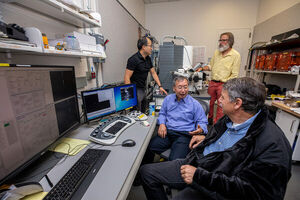
Boron Nitride with a Twist Could Lead to New Way to Make Qubits
"Easy control over bright emissions from the crystalline material offer a route toward scalable quantum computing and sensing. Achieving scalability in quantum processors, sensors, and networks requires novel devices that are easily manipulated between two quantum states. A team led by researchers from the Department of Energy’s Lawrence Berkeley National Laboratory (Berkeley Lab) has now developed a method, using a solid-state “twisted” crystalline layered material, which gives rise to tiny light-emitting points called color centers. These color centers can be switched on and off with the simple application of an external voltage. “This is a first step toward a color center device that engineers could build or adapt into real quantum systems,” said Shaul Aloni, a staff scientist at Berkeley Lab’s Molecular Foundry, who co-led the study. The work is detailed in the journal Nature Materials." [...]

How Biomimetics Helps Scientists Create Materials With New Properties
"Biomimetics is an approach that helps scientists develop new materials and devices based on principles present in nature. We’ve about how it’s applied in robotics, but there are many other fields in which it’s also used. For example, physicists working with lasers make use of biomimetics to edit and enhance properties of various materials. Nature in nano- and microstructures Scientists are able to change the properties of different materials and, for example, turn them from hydrophobic into hydrophilic ones. In order to do that, they influence the surface of a material and create a required microgeometry (morphology) by using chemical reagents or installations with programming control. However, such methods aren’t always efficient." [...]

Simulating neutron behavior in nuclear reactors
"Amelia Trainer applied to MIT because she lost a bet. As part of what the fourth-year nuclear science and engineering (NSE) doctoral student labels her “teenage rebellious phase,” Trainer was quite convinced she would just be wasting the application fee were she to submit an application. She wasn’t even “super sure” she wanted to go to college. But a high-school friend was convinced Trainer would get into a “top school” if she only applied. A bet followed: If Trainer lost, she would have to apply to MIT. Trainer lost — and is glad she did." [...]

Taking salt out of the water equation
"Ultrathin carbon membranes made from ordered polymer materials yield salt-free water quickly. Ultrathin polymer-based ordered membranes that effectively remove salt from seawater and brine could provide a promising alternative to existing water desalination systems, a KAUST-led team demonstrates. “Water desalination membranes should simultaneously exhibit high water flux and high salt rejection,” says Yu Han, who led the study. Carbon nanomaterials, such as carbon nanotubes and graphene, are expected to meet these requirements because of their unique surface chemistry and propensity to stack into channels with diameters smaller than one nanometer. Yet, channel alignment and stacking difficulties make their large-scale use in membranes challenging. “One way to address these limitations is through two-dimensional porous carbonaceous membranes with regular and uniformly distributed subnanometer-sized molecular transport channels,” says first author Jie Shen, a postdoc in Han’s group." [...]
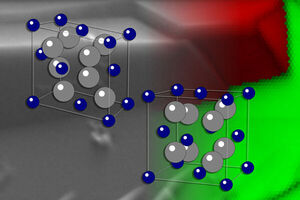
Engineers develop a new kind of shape-memory material
"The ceramic-based material could be used for highly efficient actuators for aircraft or other uses, with minimal moving parts. Shape-memory metals, which can revert from one shape to a different one simply by being warmed or otherwise triggered, have been useful in a variety of applications, as actuators that can control the movement of various devices. Now, the discovery of a new category of shape-memory materials made of ceramic rather than of metal could open up a new range of applications, especially for high-temperature settings, such as actuators inside a jet engine or a deep borehole. The new findings were reported today in the journal Nature, in a paper by former doctoral student Edward Pang PhD ’21 and professors Gregory Olson and Christopher Schuh, all in MIT’s Department of Materials Science and Engineering. Shape-memory materials, Schuh explains, have two distinct shapes, and can switch back and forth between them. They can be easily triggered by temperature, mechanical stress, or electric or magnetic fields, to change shape in a way that exerts force, he says." [...]

NIST’s Superconducting Hardware Could Scale Up Brain-Inspired Computing
"Scientists have long looked to the brain as an inspiration for designing computing systems. Some researchers have recently gone even further by making computer hardware with a brainlike structure. These “neuromorphic chips” have already shown great promise, but they have used conventional digital electronics, limiting their complexity and speed. As the chips become larger and more complex, the signals between their individual components become backed up like cars on a gridlocked highway and reduce computation to a crawl. Now, a team at the National Institute of Standards and Technology (NIST) has demonstrated a solution to these communication challenges that may someday allow artificial neural systems to operate 100,000 times faster than the human brain. The human brain is a network of about 86 billion cells called neurons, each of which can have thousands of connections (known as synapses) with its neighbors." [...]

Astronomers find a “cataclysmic” pair of stars with the shortest orbit yet
"The stars circle each other every 51 minutes, confirming a decades-old prediction. Nearly half the stars in our galaxy are solitary like the sun. The other half comprises stars that circle other stars, in pairs and multiples, with orbits so tight that some stellar systems could fit between Earth and the moon. Astronomers at MIT and elsewhere have now discovered a stellar binary, or pair of stars, with an extremely short orbit, appearing to circle each other every 51 minutes. The system seems to be one of a rare class of binaries known as a “cataclysmic variable,” in which a star similar to our sun orbits tightly around a white dwarf — a hot, dense core of a burned-out star. A cataclysmic variable occurs when the two stars draw close, over billions of years, causing the white dwarf to start accreting, or eating material away from its partner star." [...]
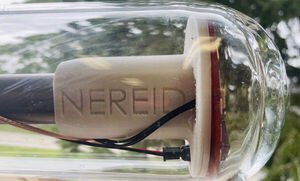
Bioplastics made of bacteria to reduce plastic waste in oceans
"A team of scientists, including Rochester biologist Anne S. Meyer, is developing bioplastics to degrade in oceans. Plastic waste poses an urgent problem for our planet’s ecosystems, especially our waterways. Millions of tons of plastic waste enter Earth’s oceans every year, and plastic has been found in every part of the ocean, including at the bottom of the deepest ocean trenches. Although some biodegradable plastics, or bioplastics, have recently been developed, these plastics were intended to break down in industrial compost facilities. In cold, dark ocean environments, they break down very slowly. What if there were a way to avoid the problem of plastic pollution while still reaping the benefits of plastic’s durability, versatility, and low cost?" [...]

Learning on the edge
"A new technique enables AI models to continually learn from new data on intelligent edge devices like smartphones and sensors, reducing energy costs and privacy risks. Microcontrollers, miniature computers that can run simple commands, are the basis for billions of connected devices, from internet-of-things (IoT) devices to sensors in automobiles. But cheap, low-power microcontrollers have extremely limited memory and no operating system, making it challenging to train artificial intelligence models on “edge devices” that work independently from central computing resources. Training a machine-learning model on an intelligent edge device allows it to adapt to new data and make better predictions. For instance, training a model on a smart keyboard could enable the keyboard to continually learn from the user’s writing. However, the training process requires so much memory that it is typically done using powerful computers at a data center, before the model is deployed on a device." [...]
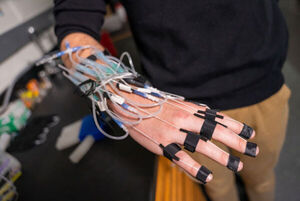
Fluidic circuits add analog options for controlling soft robots
"Rice undergrad’s programmable, air-driven circuits blend digital, analog components In a study published online this week, robotics researchers, engineers and materials scientists from Rice University and Harvard University showed it is possible to make programmable, nonelectronic circuits that control the actions of soft robots by processing information encoded in bursts of compressed air. “Part of the beauty of this system is that we're really able to reduce computation down to its base components,” said Rice undergraduate Colter Decker, lead author of the study in the Proceedings of the National Academy of Sciences. He said electronic control systems have been honed and refined for decades, and recreating computer circuitry “with analogs to pressure and flow rate instead of voltage and current” made it easier to incorporate pneumatic computation. Decker, a senior majoring in mechanical engineering, constructed his soft robotic control system primarily from everyday materials like plastic drinking straws and rubber bands. Despite its simplicity, experiments showed the system’s air-driven logic gates could be configured to perform operations called Boolean functions that are the meat and potatoes of modern computing. “The goal was never to entirely replace electronic computers,” Colter said." [...]
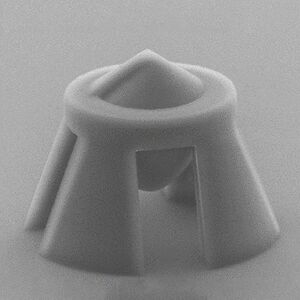
Researchers fabricate tiny multi-component beam shaper directly onto optical fiber
"3D laser printing approach could make it possible to replace bulky optics with inexpensive microscopic devices Researchers have shown that 3D laser printing can be used to fabricate a high-quality, complex polymer optical device directly on the end of an optical fiber. This type of micro-optical device — which has details smaller than the diameter of a human hair — could provide an extremely compact and inexpensive way to tailor light beams for a variety of applications. “Communication technologies, the internet and many other applications are based on optical fibers,” said research team leader Shlomi Lightman from Soreq Nuclear Research Center in Israel. “When light comes out of the fiber, large bulky optical elements are typically used to route it to the next location. Our approach minimizes both the size and cost for this process by integrating the routing process into the fiber itself.” In the Optica Publishing Group journal Optics Letters, Lightman and colleagues describe how they fabricated the tiny multi-component beam shaper directly onto a fiber. The device turns normal laser light into a twisted Bessel beam that carries orbital angular momentum and doesn’t expand in space like typical light beams." [...]

Process converts polyethylene bags, plastics to polymer building blocks
"Polyethylene plastics — in particular, the ubiquitous plastic bag that blights the landscape — are notoriously hard to recycle. They’re sturdy and difficult to break down, and if they’re recycled at all, they’re melted into a polymer stew useful mostly for decking and other low-value products. But a new process developed at the University of California, Berkeley, and Lawrence Berkeley National Laboratory (Berkeley Lab) could change all that. The process uses catalysts to break the long polyethylene (PE) polymers into uniform chunks — the three-carbon molecule propylene — that are the feedstocks for making other types of high-value plastic, such as polypropylene. The process, admittedly in the early stages of development, would turn a waste product — not only plastic bags and packaging, but all types of PE plastic bottles — into a major product in high demand. Previous methods to break the chains of polyethylene required high temperatures and gave mixtures of components in much lower demand." [...]
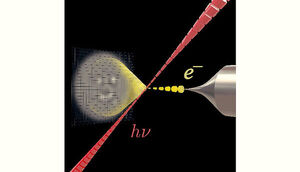
New light for shaping electron beams
"A new technique that combines electron microscopy and laser technology enables programmable, arbitrary shaping of electron beams. It can potentially be used for optimizing electron optics and for adaptive electron microscopy, maximizing sensitivity while minimizing beam-induced damage. This fundamental and disruptive technology was now demonstrated by researchers at the University of Vienna, and the University of Siegen. The results are published in PRX. When light passes through turbulent or dense material, e.g. the Earth’s atmosphere or a millimetre-thick tissue, standard imaging technologies experience significant limitations in the imaging quality." [...]
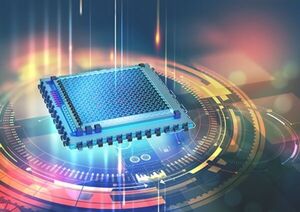
For the longest time: quantum computing engineers set new standard in silicon chip performance
"UNSW engineers have substantially extended the time that their quantum computing processors can hold information by more than 100 times compared to previous results. Two milliseconds – or two thousandths of a second – is an extraordinarily long time in the world of quantum computing. On these timescales the blink of an eye – at one 10th of a second – is like an eternity. Now a team of researchers at UNSW Sydney has broken new ground in proving that ‘spin qubits’ – properties of electrons representing the basic units of information in quantum computers – can hold information for up to two milliseconds. Known as ‘coherence time’, the duration of time that qubits can be manipulated in increasingly complicated calculations, the achievement is 100 times longer than previous benchmarks in the same quantum processor. “Longer coherence time means you have more time over which your quantum information is stored – which is exactly what you need when doing quantum operations,” says PhD student Ms Amanda Seedhouse, whose work in theoretical quantum computing contributed to the achievement." [...]
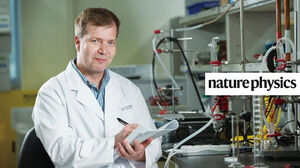
80-year-old Mystery in Static Electricity Finally Solved
"The work by Distinguished Professor Bartosz A. Grzybowski was published online and will be included in the October 2022 issue of Nature Physics. Historically, contact electrification (CE) was humanity’s first and only source of electricity up until ca. 18th century yet its true nature is still elusive. Today it is considered a core component of technologies such as laser printers, LCD production processes, electrostatic painting, separation of plastics for recycling, etc., as well as a major industrial hazard (damage to electronic systems, explosions in coal mines, fires in chemical plants, etc.) due to electrostatic discharges (ESD) accompanying CE. In a vacuum, ESDs of a simple adhesive tape are so powerful that they generate enough X-rays to take an X-ray image of a finger [Nature 455, 2008, 1089–1092]." [...]
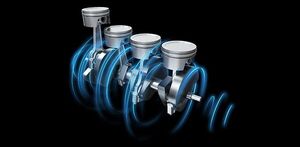
Computationally Predicting Where the Wear Will Occur in Engines
"A research group has created an analysis method to predict wear and seizure locations in the sliding parts of engine piston pins. The breakthrough will help limit wear and tear on transportation and industrial machinery components and make them more fuel efficient. Details of their discovery were published in the journal ASME Journal of Tribology on August 29, 2022. Improvements to the efficiency of internal combustion engines are necessary if we are to overcome their environmental and sustainability problems. Reciprocating engines use reciprocating pistons to extract power from combustion and convert it into rotational motion. They are commonly used in automobiles." [...]
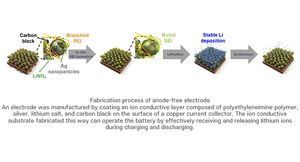
The Battery that Runs 630 km on a Single Charge
"The number of newly registered electric vehicles (EVs) in Korea surpassed 100,000 units last year alone. Norway is the only other country to match such numbers. The core materials that determine the battery life and charging speed of now commonly seen EVs are anode materials. Korea’s domestic battery industry has been committed to finding revolutionary ways to increase the battery capacity by introducing new technologies or other anode materials. But what if we get rid of anode materials altogether? A POSTECH research team led by Professor Soojin Park and PhD candidate Sungjin Cho (Department of Chemistry) in collaboration with Professor Dong-Hwa Seo and Dr. Dong Yeon Kim (School of Energy and Chemical Engineering) at Ulsan Institute of Science and Technology (UNIST) have developed anode-free lithium batteries with performance of long battery life on a single charge." [...]
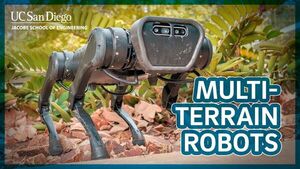
New Algorithms Help Four-Legged Robots Run in the Wild
"Ateam led by the University of California San Diego has developed a new system of algorithms that enables four-legged robots to walk and run on challenging terrain while avoiding both static and moving obstacles. In tests, the system guided a robot to maneuver autonomously and swiftly across sandy surfaces, gravel, grass, and bumpy dirt hills covered with branches and fallen leaves without bumping into poles, trees, shrubs, boulders, benches or people. The robot also navigated a busy office space without bumping into boxes, desks or chairs. The work brings researchers a step closer to building robots that can perform search and rescue missions or collect information in places that are too dangerous or difficult for humans. The team will present its work at the 2022 International Conference on Intelligent Robots and Systems (IROS), which will take place from Oct. 23 to 27 in Kyoto, Japan. The system provides a legged robot more versatility because of the way it combines the robot’s sense of sight with another sensing modality called proprioception, which involves the robot’s sense of movement, direction, speed, location and touch—in this case, the feel of the ground beneath its feet." [...]

Exploring the Plasma Loading Mechanism of Radio Jets Launched from Black Holes
"Galaxies, including our Milky Way, host supermassive black holes in their centers, and their masses are millions to billions of times larger than the Sun. Some supermassive black holes launch fast-moving plasma outflows which emit strong radio signals, known as radio jets. Radio jets were first discovered in the 1970s. But much remains unknown about how they are produced, especially their energy source and plasma loading mechanism. Recently, the Event Horizon Telescope Collaboration uncovered radio images of a nearby black hole at the center of the giant elliptical galaxy M87. The observation supported the theory that the spin of the black hole powers radio jets but did little to clarify the plasma loading mechanism." [...]
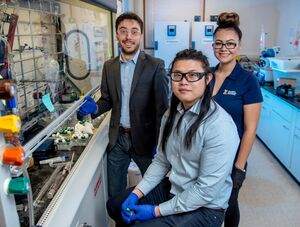
Scientists crack upcycling plastics to reduce greenhouse gas emissions, advancing a recent Science study
"Scientists from the University of Illinois Urbana-Champaign, University of California, Santa Barbara, and Dow have developed a breakthrough process to transform the most widely produced plastic — polyethylene (PE) — into the second-most widely produced plastic, polypropylene (PP), which could reduce greenhouse gas emissions (GHG). “The world needs more and better options for extracting the energy and molecular value from its waste plastics,” said co-lead author Susannah Scott, Distinguished Professor and Mellichamp Chair of Sustainable Catalytic Processing at UC Santa Barbara. Conventional plastic recycling methods result in low-value plastic molecules and, thus, offer little incentive to recycle the mountains of plastic waste that have accumulated over the past several decades. But, Scott added, “turning polyethylene into propylene, which can then be used to make a new polymer, is how we start to build a circular economy for plastics.” “We started by conceptualizing this approach and demonstrated its promise first through theoretical modeling — now we have proved that it can be done experimentally in a way that is scalable and potentially applicable to current industry demands,” said co-lead author Damien Guironnet, a professor of chemical and biomolecular engineering at Illinois, who published the first study outlining the necessary catalytic reactions in 2020 with Illinois professor Baron Peters. The new study published in the Journal of the American Chemical Society announces a series of coupled catalytic reactions that transform PE, which is #2 and #4 plastic that make up 29% of the world’s plastic consumption, into the building block propylene that is the key ingredient to produce PP, also known as #5 plastic that accounts for close to 25% of the world’s plastic consumption. This study establishes a proof-of-concept for upcycling PE plastic with more than 95% selectivity into propylene." [...]
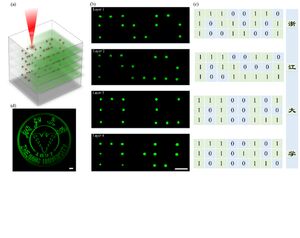
Instantaneous ultrafast pulse, forever optical information
"A new publication from Opto-Electronic Advances, DOI 10.29026/oea.2023.220008, discusses perpetual optical data storage in glass with ultra-high stability and tailored photoluminescence. In the development history of human society, data storage plays an indispensable and pivotal role and has significantly boosted spacious domains from social science to industrial production. With the advent of the Internet of Things and artificial intelligence, the total amount of information has doubled biennially, and it will reach 175 ZB (1 ZB = 1012 GB) by 2025 according to the valuation by International Data Corporation. However, accounting for 80% of the total stored data generated by the government, data disaster recovery centers, and archives are not frequently accessed but still need to be available over long periods in a reliable and low-cost way. However, the existing storage technologies (semiconductor or magnetic-based storage) cannot cope with long-term storage of large amounts of cold data due to the problems such as huge energy consumption, limited lifetime, and low storage density. According to the report by the International Data Center Service provider, the energy consumption of modern data centers will soon exceed 8% of the total global power generation." [...]
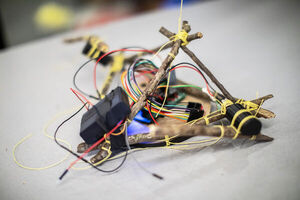
A robot made of sticks
"Devin Carroll, a doctoral candidate in the School of Engineering and Applied Sciences, is designing a modular robot called StickBot, which may be adapted for rehabilitation use in global public health settings. In late summer, just as the leaves were starting to crisp and curl in the heat, Devin Carroll walked out of his apartment, looked on the ground, and picked up a couple of sticks that he thought might work for his robot. About half an inch thick and the length of an adult hand, he stripped the three sticks of their bark and lashed them with string to StickBot, a modular robot composed of circuitry, actuators, a microcontroller, and a motor driver. Powered by four AA batteries, connected by a maze of wires and blinking lights, StickBot’s wooden arms now thump up and over, powering the robot across the table at Penn’s General Robotics, Automation, Sensing & Perception (GRASP) Lab, where Carroll is a Ph.D. candidate in the School of Engineering and Applied Sciences. Controlling the robot using an app he designed, Carroll shows how StickBot can pivot from using the sticks as legs in “crawler mode,” to using them as arms. In “grasper mode,” the sticks are attached to a controller plate on one side to form a hinge joint while moving with their free end to hold a cup upright." [...]
Projetos Maker
Diversos Projetos interessantes.
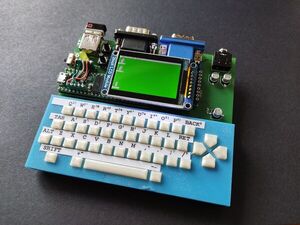
What is the T-COMPUTER?
"The T-COMPUTER is a micro computer platform supported and powered by the MCUME project. It is based on the powerful Teensy4.1 MCU (800+ MHz ARM based, 1MB internal + 8MB QSPI RAM) It features: - a 42 keys basic keyboard (including D-PAD controls + 3 buttons) - a built-in 320x240 TFT display - VGA output - 16 bits stereo DAC output - USB host input (for keyboard, mouse, midi devices...) - a DB9 digital joystick input (Atari 2600 style joystick) - 2 general purpose buttons - 8+6 shared I/O pins for GP usage - a SD card slot (from the Teensy 4.1) it can be powered over micro USB or can be used as a takeaway system powered by a 1000mA/H lipo. the T-COMPUTER is a DIY project, you can build it yourself and contribute to it! " [...]
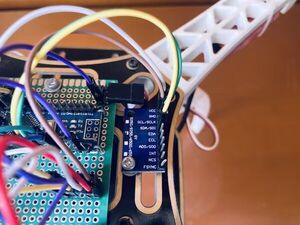
Reading MPU9250 sensors with Arduino
"Understanding MPU9250: wiring, coding and testing MPU-9250 is one of the most advanced combined accelerometer, gyroscope and compass small size sensors currently available. It replaces the popular MPU-9150 lowering the power consumption, improving gyro noise and compass full scale range performance. It has many advanced features, including low pass filtering, motion detection and even a programmable specialized processor. Internally it includes the MPU-6500, which contains a 3-axis gyroscope plus a 3-axis accelerometer, and the AK8963, the market leading 3-axis digital compass. The MPU-9250 uses 16-bit analog-to-digital converters (ADCs) for digitizing all 9 axes. Gyroscope A gyroscope is a device used for measuring or maintaining orientation and angular velocity." [...]
Raspberry PICO Nixie Clock Lcd
"Make Nixie Clock for ST7735+Raspberry PICO I want to make a beautiful clock project using the equipment I have. ST7735 and Raspberry Pi PICO in Micropython language" [...]
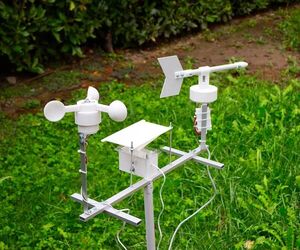
DIY Weather Station With ESP32
"Hello! Today we are going to look at this smart weather station I built. The weather station I built measures temperature, humidity, air pressure, wind speed and direction, and the amount of rain that falls. All the data is collected by an ESP32, which is a kind of Arduino, and via wifi it is sent to the mobile app. On the app, or on the web page, we can see real-time data from the weather station and graphs, for example of the temperature, with minimum and maximum of every day, and the pressure graph, which we can use to make a rough weather forecast. If this sounds difficult, don't worry, in this guide you can find all the informations." [...]

Home Automation system with ESP32 using Blynk 2.0 | IoT
"In this project, we are going to make a “home automation system using esp32 board and Blynk 2.0 IOT“. Basically, esp32 is a micro-controller that has in-built wifi and Bluetooth. So, we will connect our home appliances with wifi and control them using our mobile. In this tutorial, I’ll show you step by step procedure to make this home automation system. You can easily make this project by following this tutorial. " [...]
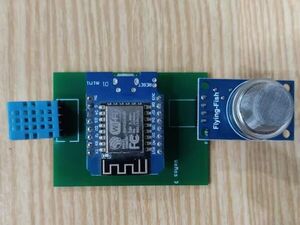
Low cost Outdoor Air Quality Monitoring System
"This Project will present an open source Low Cost Air Quality Monitoring System by using free Cloud and Open source hardware. Air Quality is the biggest issue of current century and it's growing day by day due to rapid growth of industries specially under developed countries are facing very negative impact on human beings as well as on other living organisms due to air pollution. To combat with pollution firstly we need a system to measure the pollution so that all the stake holders of the system take mandatory measurements to protect the environment. There are many devices in the market for air quality monitoring but expensive to sort out the issue I have developed a device with low cost open source controllers and sensors to carry out that project with free cloud services. To complete the project we need below hardware & software. Hardware 1-Wemos D1 Mini 2-MQ-135 (Air Quality Sensor) 3-DHT11/DHT22 (Temperature & Humidity Sensor) 4-Breadboard or PCB you can order from here" [...]

RatPack : Wearable Technology for the African Giant Pouched Rat
"RatPack The P.Black Oomvelt RatPack is a wearable technology created for the giant African pouched rat to help them communicate to their human handlers when they find a landmine or object of interest.Additionally, the RatPack was made to be of service in the training of the rats and their potential uses in scouting new areas. The RatPack functions through the use of an accelerometer embedded in a vest that the animals wear. The accelerometer monitors the animal's body motion. Changes in the animal's body motion are monitored in real-time by an embedded machine learning processor that detects when the animal makes certain gestures it has previously been trained to make in response to detecting a scent or object. These gestures are communicated to a person in real time through a webpage. This process is conceptually similar to how a smartwatch can detect if a person is walking or jogging by the motion of the wrist." [...]
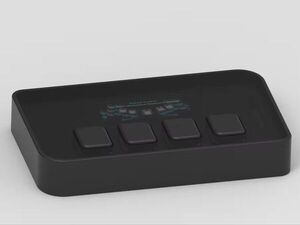
Shortcut Keyboard
"Shortcut Keyboard powered by Seeed Studio XIAO RP2040 featuring 4 mechanical switches and a 1.47 inch LCD Display. The SEEED Xiao series features a small footprint and many microcontrollers for various applications, all at low prices. This is one of the reasons why I use them in many of my projects. When I heard about the SEEED Fusion Keyboard design contest, it was clear to me that I wanted to participate. Since I've been playing around with LCD displays a lot lately, I wanted to use a display I had lying around. It was a 1.47 inch LCD display from Waveshare with a resolution of 172x320." [...]
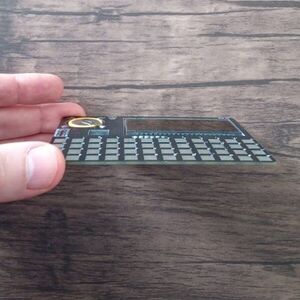
Ello Lc1
"World's thinnest fully standalone DIY computer - 2mm!! I find annoying to see systems claiming "credit card computer" while at the same time being as thick as 50-60 actual credit cards. With this project I wanted to build a something that truly fits that name and make the thinnest possible system entirely at home without relying on any advanced equipment for assembly. This one is a native 8-bit system, unlike most other who use 32-bit processors to emulate 8-bit computers. It is as simple as it can be - only 9 components, PCB and a battery! I wrote a "Bitling BASIC" interpreter for it, which came to be a very efficient one, and can work on extremely minimalistic systems with as little as 2K memory." [...]
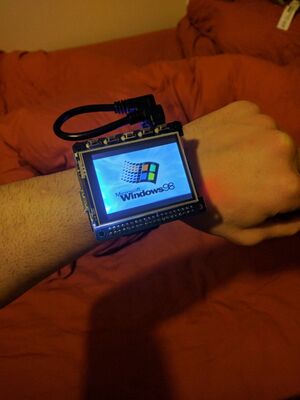
Windows 98 Wrist Watch
"Everyone's favourite Operating System. On your wrist! Key goals summary: Emulate Windows 98 on a Raspberry Pi. Make it wrist-wearable. I have always had somewhat of a soft-spot for Windows 98, despite it driving me insane back in the day on my old Pentium II system with 64mb RAM and using some god awful on-board graphics. But these days I don’t HAVE to suffer it as my only source of computing; which, somehow makes me want to go back and use it – I’ve built my own dream Windows 98 PC that I like to fire up every now and then and I love it." [...]

DIY Home Automation Intruder Alarm System!
"In this project I will be showing you how to use the Home Assistant software in order to create an intruder alarm system for your home. The system will basically detect if the door gets opened without permission and then it will send out a notification to your smartphone. Along the way I will show you how to use a Raspberry Pi and ESP8266 in order to properly utilize the Home Assistant software. Let's get started! " [...]
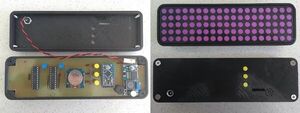
LOL Clock
"A 3D printed clock made up of lots of LEDs (LOL). This is my remake of a LOL Clock (Lots of LEDs) by robaux. One of my goals was to "clean up" the wiring and to reduce the depth of the overall case. My changes are: - A new back piece 18mm thinner than the original has holes for the power socket and buttons. - A new circuit design has been done that uses two LED constant current drivers and five MOSFETs row drivers. - Buttons to set or change the time." [...]

Custom Trombone Kazoo Controller for Trombone Champ
"How it works The Time-of-Flight (ToF) sensor measures the approximate distance between the main trombone section (bell brace) and the slider brace. It sends this data over USB Serial to the PC running my custom software, which combines this with audio data from the microphone. The mouse is then moved relative to the changing distance from the sensor, and clicked whenever a loud sound is heard. The click is held for the duration of the sound. In other words, the audio pitch doesn't matter, just the volume. It's up to your accuracy with the trombone slider to nail the notes!" [...]
Secção Videos
Videos interessantes.
That's all Folks!



